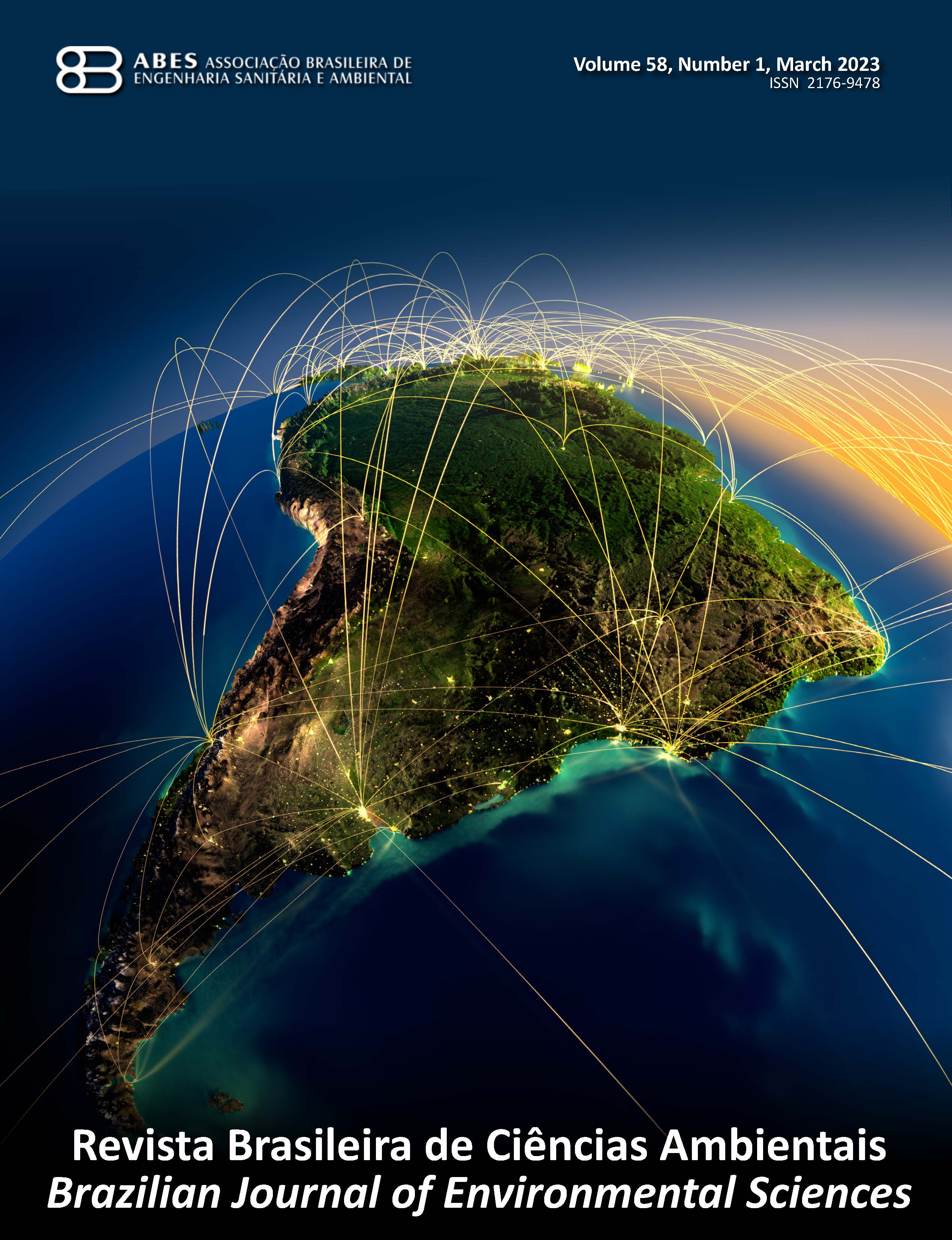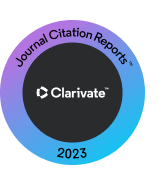Chiropterophily syndrome in phyllostomid bats (Chiroptera, Phyllostomidae): a literature review
DOI:
https://doi.org/10.5327/Z2176-94782242Keywords:
bat-plant interactions; bibliometric research; conservation; ecosystem services.Abstract
This review explores the relation between pollination and chiropterophily, emphasizing phyllostomid bats as key pollinators, particularly in tropical and subtropical ecosystems. These bats play an essential role in chiropterophilous pollination syndromes, where plants have evolved specific morphological traits to attract nocturnal bats. Bibliometric data show us that during the period analyzed (2004–2024), 174 scientific articles were published, and Brazil emerged as the primary contributor to scientific production on chiropterophily. Although chiropterophily syndrome provides numerous ecological and economic benefits, its study presents significant challenges due to a variety of ecological, behavioral, and methodological factors. Several analyzed manuscripts highlight the critical interdependence between bats and plants and underscore the urgent need for conservation strategies to preserve the ecological integrity and sustainability of ecosystems. A number of studies also show how changes in the phenology of plant species can compromise plant-pollinator interactions, and highlight the increasing impacts of habitat fragmentation and urbanization on bats. Our data show that, although scientific production on chiropterophily has grown in recent years, the variations observed over time may reflect changes in research priorities, funding availability, and a lack of specialized researchers in the field.
Downloads
References
Ab’Saber, A.N., 1977. Os domínios morfoclimáticos na América do Sul. Geonoma, v. 1, 1-19.
Abreu, E.F.; Casali, D.; Costa-Araújo, R.; Garbino, G.S.T.; Libardi, G.S.; Loretto, D.; Loss, A. C.; Marmontel, M.; Moras, L.M.; Nascimento, M.C.; Oliveira, M.L.; Pavan, S.E.; Tirelli, F. P., 2024. Lista de Mamíferos do Brasil (2024-1). Zenodo. https://doi.org/10.5281/zenodo.14536925.
Abrol, D.P., 2011. Pollination biology: biodiversity, conservation, and agricultural production. Springer, Dordrecht, Heidelberg, London, New York. https://doi.org/10.1007/978-94-007-1942-2.
Aria, M.; Cuccurullo, C., 2017. Bibliometrix: An R-tool for comprehensive science mapping analysis. Journal of Informetrics, v. 11 (4), 959-975. https://doi.org/10.1016/j.joi.2017.08.007.
Bell, K.L.; Vere, N.; Keller, A.; Richardson, R.T.; Gous, A.; Burgess, K.S.; Brosi, B.J., 2016. Pollen DNA barcoding: current applications and future prospects. Genome. v. 59 (9), 629-640. https://doi.org/10.1139/gen-2015-0200.
Buzato, S.; Gianini, T.C.; Machado, I.C.; Sazima, M.; Sazima, I., 2011. Polinizadores vertebrados: Uma visão geral para as espécies brasileiras. In: Imperatriz-Fonseca, V.L.; Canhos, D.A.L.; Saraiva, A.M. (Eds.), Polinizadores no Brasil: contribuição e perspectivas iniciativas para a biodiversidade, uso sustentável, conservação e serviços ambientais. Instituto de Estudos Avançados da Universidade de São Paulo, São Paulo.
Corá, D.H.; Oliveira, F.W.; Lazzarotto, L.M.V.; Biassi, D.L.; Baldissera, R.; Oliveira, A.D.D.; Galiano, D., 2024. Abundance of the bat Sturnira lilium (Phyllostomidae) in relation Solanum mauritianum (Solanaceae) diaspores in an Atlantic Forest fragment of Southern Brazil. Anais da Academia Brasileira de Ciências, v. 96 (2), e20220830. https://doi.org/10.1590/0001-3765202420220830.
Díaz, M.M.; Solari, S.; Gregorin, R.; Aguirre, L.F.; Barquez, R.M., 2021. Clave de Identificación de los Murciélagos Neotropicales. Yerba Buena, Tucumán, Programa de Conservación de los Murciélagos de Argentina, 207 p.
Dick, C.W.; Bermingham, E.; Lemes, M.R.; Gribel, R., 2007. Extreme long-distance dispersal of the lowland tropical rainforest tree Ceiba pentandra L. (Malvaceae) in Africa and the Neotropics. Molecular Ecology, v. 16, 23-35. https://doi.org/10.1111/j.1365-294X.2007.03341.x.
Esbérard, C.E.L., 2003. Marcação e deslocamento em morcegos. Divulgação do Museu de Ciências e Tecnologia, v. 2, 23-24.
Ferraz, R.P.D.; Prado, R.B.; Parron, L.M.; Campanha, M.M., 2019. Serviços ecossistêmicos: uma abordagem conceitual. In: Ferraz, R.P.D.; Prado, R.B.; Parron, L.M.; Campanha, M.M. (Eds), Marco Referencial em Serviços Ecossistêmicos. Embrapa Solos, Brasília, pp. 19-36.
Fischer, E.; Araujo, A.C.d.; Gonçalves, F., 2014. Polinização por Vertebrados. In: Rech, R.R.; Agostini, K.; Oliveira, P.E.; Machado, I.C., Biologia da Polinização. Editora Projeto Cultural, Rio de Janeiro, pp. 311-326.
Fleming, T.H., 2008. The impact of bat pollination on ecosystem function. Journal of Biogeography, v. 35 (5), 377-388. https://doi.org/10.1111/j.1365-2699.2007.01833.x.
Fleming, T.H., 2009. The role of fruit-eating bats in plant reproduction. Annals of Botany, v. 103, 203-212. https://doi.org/10.1093/aob/mcp197.
Fleming, T.H.; Geiselman, C.; Kress, W.J., 2009. The evolution of bat pollination: a phylogenetic perspective. Annals of Botany, v. 104 (6), 1017-1043. https://doi.org/10.1093/aob/mcp197.
Fleming, T.H.; Muchhala, N., 2008. Nectar-feeding bird and bat niches in two worlds: pantropical comparisons of vertebrate pollination systems. Journal of Biogeography, v. 35, (5), 764-780. https://doi.org/10.1111/j.1365-2699.2007.01833.x.
Fleming, T.H.; Valiente-Banuet, A., 2002. Columnar cacti and their mutualists: evolution, ecology, and conservation. Tucson, Arizona, University of Arizona Press. 386 p. https://doi.org/10.2307/j.ctv23khmrw.
Florez-Montero, L.G.; Muylaert, R.L.; Nogueira, M.R.; Geiselman, C.; Santana, S.E.; Stevens, R.D.; Tschapka, M.; Rodrigues, F.A.; Mello, M.A.R., 2022. NeoBat Interactions: A Data Set of Bat–Plant Interactions in the Neotropics. Ecology, v. 103 (4), e3640. https://doi.org/10.1002/ecy.3640.
Frick, W.F.; Kingston, T.; Flanders, J., 2019. A review of the major threats and challenges to global bat conservation. Annals of the New York Academy of Sciences. v. 1469 (1), 5-25. https://doi.org/10.1111/nyas.14045.
Galindo-Leal, C.; Câmara, I.G., 2005. A biodiversidade no Brasil: um enfoque geral. Revista Brasileira de Ciências Ambientais (RBCIAMB), v. 16, 13-25. https://doi.org/10.5327/10.5327/Z2176-947820050001.
Garbino, G.S.T.; Vinícius, C.C.; Gregorin, R.; Lima, I.P.; Loureiro, L.; Moras, L.; Moratelli, R.; Nascimento, M.C.D.; Nogueira, M.R.; Novaes, R.L.M.; Pavan, A.C.; Tavares, V.D.C.; Peracchi, A.L., 2024. Updated checklist of bats (Mammalia: Chiroptera) from Brazil. Zoologia (Curitiba), v. 41, e23073. https://doi.org/10.1590/S1984-4689.v41.e23073.
Garibaldi, L.A.; Steffan-Dewenter, I.; Winfree, R.; Aizen, M.A.; Bommarco, R.; Cunningham, S.A.; Kremen, C.; Carvalheiro, L.G.; Harder, L.D.; Afik, O.; Bartomeus, I.; Benjamin, F.; Boreux, V.; Cariveau, D.; Chacoff, N.P.; Dudenhöffer, J.H.; Freitas, B.M.; Ghazoul, J.; Greenleaf, S.; Hipólito, J.; Holzschuh, A.; Howlett, B.; Isaacs, R.; Javorek, S.K.; Kennedy, C.M.; Krewenka, K.M.; Krishnan, S.; Mandelik, Y.; Mayfield, M.M.; Motzke, I.; Munyuli, T.; Nault, B.A.; Otieno, M.; Petersen, J.; Pisanty, G.; Potts, S.G.; Rader, R.; Ricketts, T.H.; Rundlöf, M.; Seymour, C.L.; Schüepp, C.; Szentgyörgyi, H.; Taki, H.; Tscharntke, T.; Vergara, C.H.; Viana, B.F.; Wanger, T.C.; Westphal, C.; Williams, N.; Klein, A.M., 2013. Wild pollinators enhance fruit set of crops regardless of honey bee abundance. Science, v. 339 (6127), 1608-1611. https://doi.org/10.1126/science.1230200.
Ghanem, S.J.; Voigt, C.C., 2012. Increasing awareness of ecosystem services provided by bats. Advances in the Study of Behavior, v. 44, 279-302. https://doi.org/10.1016/B978-0-12-394288-3.00007-1.
Gómez-Ruiz, E.P.; Lacher Jr., T.E., 2019. Climate change, range shifts, and the disruption of a pollinator-plant complex. Scientific Reports, v. 9, 14048. https://doi.org/10.1038/s41598-019-50059-6.
Hasan, S.S.; Zhen, L.; Miah, Md.G.; Ahamed, T.; Samie, A., 2020. Impact of land use change on ecosystem services: A review. Environmental Development, v. 34 (768), 100527. https://doi.org/10.1016/j.envdev.2020.100527.
Herzschuh, U.; Li, C.; Böhmer, T.; Postl, A.K.; Heim, B.; Andreev, A.A.; Cao, X.; Wieczorek, M.; Ni, J., 2022. LegacyPollen 1.0: A taxonomically harmonized global late Quaternary pollen dataset of 2831 records with standardized chronologies. Earth System Science Data, v. 14 (7), 3213-3227. https://doi.org/10.5194/essd-14-3213-2022.
Jardim, J.G.; Melo, A.C., 2020. Impacts of land use change on biodiversity in the Atlantic Forest. Ecological Indicators, v. 112, 106113. https://doi.org/10.1016/j.ecolind.2020.106113.
Kunz, T.H.; Fenton, M.B. (Eds.), 2003. Bat ecology. University of Chicago Press, Chicago, Illinois.
Kunz, T.H.; Torrez, E.B.; Bauer, D.; Lobova, T.; Fleming, T.H., 2011. Ecosystem services provided by bats. Annals of the New York Academy of Sciences, v. 1223 (1), 1-38. https://doi.org/10.1111/j.1749-6632.2011.06004.x.
Lamim-Guedes, V., 2014. Vinte anos da Rio92: a conservação da biodiversidade e os serviços de polinização. Bioikos, Campinas, v. 27 (1), 13-23.
Mammal Diversity Database, 2023. Mammal Diversity Database (1.11). Zenodo (Accessed April 01, 2025) at: https://zenodo.org/records/7830771.
Muscarella, R.; Fleming, T. H., 2007. The role of frugivorous bats in tropical forest succession. Biological Reviews, v. 82 (4), 573-590. 10.1111/j.1469-185X.2007.00026.x.
Myers, N.; Mittermeier, R.A.; Mittermeier, C.G.; Da Fonseca, G.A.B.; Kent, J., 2000. Biodiversity hotspots for conservation priorities. Nature, v. 403, 853-858. https://doi.org/10.1038/35002501.
Quesada, M.; Stoner, K.E.; Lobo, J.A.; Herrerías‑Diego, Y.; Palacios‑Guevara, C.; Munguía‑Rosas, M.A.; O.‑Salazar, K.A.; Rosas‑Guerrero, V., 2004. Effects of forest fragmentation on pollinator activity and consequences for plant reproductive success and mating patterns in bat‑pollinated bombacaceous trees. Biotropica, v. 36 (2), 131-138. https://doi.org/10.1111/j.1744-7429.2004.tb00305.x
Pacheco, V.R.; Diaz, S.; Graham Angeles, L.A.; Flores-Quispe, M.; Calizaya-Mamani, G.; Ruelas, D.; Sánchez-Vendizú, P., 2021. Lista actualizada de la diversidad de los mamíferos del Perú y una propuesta para su actualización. Revista Peruana de Biología, v. 28 (4), e21019. https://doi.org/10.15381/rpb.v28i4.21019.
Potts, S.G.; Petanidou, T.; Roberts, S.; O’Toole, C.; Hulbert, A.; Willmer, P., 2006. Plant-pollinator biodiversity and pollination services in a complex Mediterranean landscape. Biological Conservation, v. 129 (4), 519-529. https://doi.org/10.1016/j.biocon.2005.11.021.
Ramírez-Chaves, H E.; Morales-Martínez, D.M.; Rodríguez-Posada, M.E.; Suárez-Castro, A.F., 2022. Checklist of the mammals (Mammalia) of Colombia. Mammalogy Notes, v. 7, 253. https://doi.org/10.47603/mano.v7n2.253.
Raven, P.H.; Evert, R.F.; Eichorn, S.E.; Peter, H., 2014. Biologia vegetal. 8. ed. Rio de Janeiro: Guanabara Koogan, p. 855. ISBN: 8527706415.
Razera, J.C.C., 2016. Contribuições da cienciometria para a área brasileira de Educação em Ciências. Ciência e Educação (Bauru), v. 22 (3), 557-560. https://doi.org/10.1590/1516-731320160030001.
Regolin, A.L.; Muylaert, R.L.; Crestani, A.C.; Dáttilo, W.; Ribeiro, M.C., 2020. Seed dispersal by Neotropical bats in human-disturbed landscapes. Wildlife Research, v. 48 (1), 1–6. https://doi.org/10.1071/WR19138.
Reis, N.R..; Peracchi, A.L.; Pedro, W.A.; Lima, I.P., 2007. Morcegos do Brasil. [s.n.], Londrina, 253 p.
Ribeiro, M.C.; Martensen, A.C.; Metzger, J.P.; Tabarelli, M.,; Scarano, F.; Fortin, M.J., 2011. The Brazilian Atlantic Forest: A Shrinking Biodiversity Hotspot. In: Zachos, F., Habel, J. (Eds), Biodiversity Hotspots. Springer, Berlin, Heidelberg, pp. 405-434. https://doi.org/10.1007/978-3-642-20992-5_21.
Rojas, D.; Vale, Á.; Ferrero, V.; Navarro, L., 2011. When did plants become important to leaf-nosed bats? Diversification of feeding habits in the family Phyllostomidae. Molecular Ecology, v. 20(10), 2217-2228. https://doi.org/10.1111/j.1365-294X.2011.05082.x.
Silva, Z.D.; Gurgel, E.S.C.; Correia, L.L.; Vieira, T.B., 2024. Seed dispersal by bats (Chiroptera: Phyllostomidae) and mutualistic networks in a landscape dominated by cocoa in the Brazilian amazon. Global Ecology and Conservation, v. 55, e03252. https://doi.org/10.1016/j.gecco.2024.e03252.
Simmons, N.B.; Cirranello, A.L., 2025. Bat Species of the World: A taxonomic and geographic database. Version 1.8.1. https://batnames.org/.
Smith, J.; Brown, L. 2022. Modern approaches to pollen taxonomy and their ecological implications. Palynology, v. 46 (2), 150-168.
Stefanuto, V.A.; Oliveira, S.M.P.d.; Moreira, J.F.; Aguiar, A.S.; Farias, E., 2022. Análise bibliométrica como ferramenta metodológica. In: Silva, C.N.N.; Rosa, D.S.; Ferreira, M.R.G. (Eds.), A Metodologia da Pesquisa em Educação Profissional e Tecnológica. Nova Paideia, Brasília, p. 307-326.
Taia, W.K., 2022. Pollen grain diversity and application in taxonomy and evolution. Taeckholmia, v. 42 (1), 27-42. https://doi.org/10.21608/taec.2022.258213.
Tschapka, M., 2004. Energy density patterns of nectar resources permit coexistence within a guild of Neotropical flower-visiting bats. Journal of Zoology, v. 263 (1), 7-21. https://doi.org/10.1017/S0952836903004734.
Valois, A.C.C.; Salomão, A.N.; Aleim, A.C., 1996. Glossário de recursos genéticos vegetais. Embrapa-SPI, Brasília, 62 p.
Viertel, P.; König, M. 2022. Pattern recognition methodologies for pollen grain image classification: a survey. Machine Vision and Applications. v. 33 (18), 1-19. https://doi.org/10.1007/s00138-021-01271-w.
Willmer, P., 2011. Pollination and Floral Ecology. Princeton University Press. Princeton, New Jersey, p. 828.
Wolowski, M.; Nunes, C.E.P.; Amorim, F.W.; Vizentin-Bugoni, J.; Aximoff, I.; Maruyama, P.K.; Brito, V.L.G.; Freitas, L., 2016. Interações planta-polinizador em vegetação de altitude na Mata Atlântica. Oecologia Australis, v. 20 (2), 145-161. https://doi.org/10.4257/oeco.2016.2002.02.
Zamora-Gutierrez, V.; Rivera-Villanueva, A.N.; Martínez Balvanera, S.; Castro-Castro, A.; Aguirre-Gutiérrez, J., 2021. Vulnerability of bat–plant pollination interactions due to environmental change. Global Change Biology, v. 27 (14), 3367-3382. https://doi.org/10.1111/gcb.15611.
Downloads
Published
How to Cite
Issue
Section
License
Copyright (c) 2025 Revista Brasileira de Ciências Ambientais

This work is licensed under a Creative Commons Attribution 4.0 International License.

























